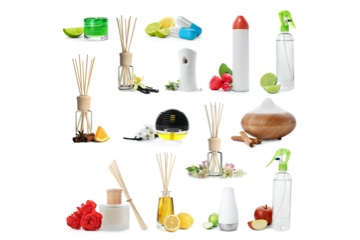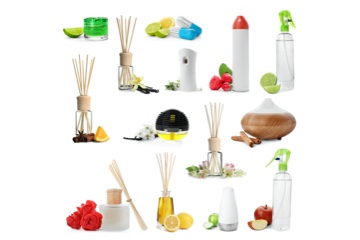

Plug-in air fresheners are held in relatively high esteem as a household means of eliminating odors.
These forms of fresheners largely saturated the market in the 1990s after aerosol sprays took a hit in the preceding decade when scientists began to publish their findings on how aerosol cans negatively impact the ozone and surrounding environment.
Thus, plug-in air fresheners became a replacement and common household fixture. But with an eye for indoor air quality, one may find that they should actually err on the side of caution, as these fresheners don’t only emit a pleasant scent — but various unpleasant compounds.
Phthalates and Naphthalene
Phthalates, a compound used to increase the flexibility and longevity in plastics, is actually a commonly-found component of air fresheners.
In 2007, the Natural Resources Defence Council conducted a study that revealed 86% of the air fresheners they tested (approximately 12 of 14) contained phthalates, “including those marketed as ‘all-natural’ or ‘unscented’ — and none of the products [they] tested listed phthalates on their labels.”
The problem? Phthalates — according to the NRDC as well as a 2003 study published in Environmental Health Perspectives — cause reproductive abnormalities, birth defects, and can worsen asthma when airborne.
Additionally, many indoor air fresheners contain naphthalene, a chemical which has been found to be potentially carcinogenic to humans and has been confirmed to damage tissue and cause cancer in the lungs of rats.
Volatile Organic Compounds
Further, one of the properties of plug-in air fresheners that makes them so effective is their ability to disperse easily throughout a room. This property is the result of volatile organic compounds, or VOCs, found in air fresheners, which have a low boiling point.
But VOCs, according to the Environmental Protection Agency, can adversely impact the health of a building’s residents.
“… Some of these air fresheners have volatile organic compounds (VOCs) like formaldehyde and petroleum distillates which can be very irritating to eyes, skin, and throat,” as explained in a blog post published by the EPA. “Even unscented air fresheners can produce an allergic reaction in certain individuals.”
Finally, most air fresheners today reportedly contain a VOC called “Dichlorobenzene,” which is both an EPA-registered pesticide and a known carcinogen associated with lung damage.
Ultimately, if you’re seeking a healthy means of eliminating odor in your home, you’ll want to lean toward natural alternatives and be wary of chemically-based store bought products.
The good news? If you’re worried about the presence of chemicals in your home, you can always turn to your local experts. If you’ve been experiencing health complications that you believe may be associated with volatile organic compounds in your home, contact Luce Air Quality today by calling (904) 803-1014! With our team, you’ll always receive thorough testing done right the first time.


